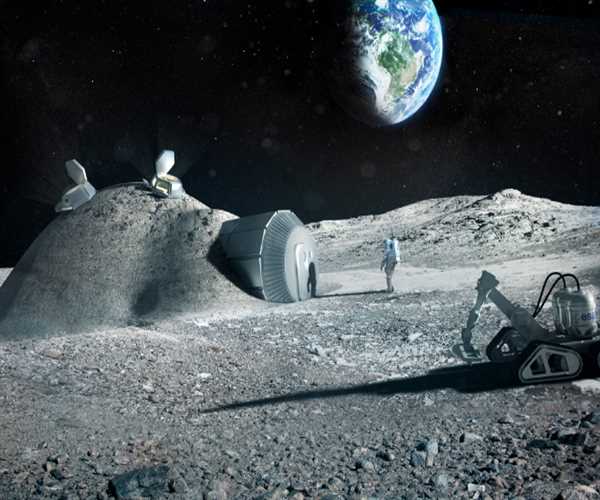
28-Mar-2024 , Updated on 3/29/2024 3:57:56 AM
When Peoples Will Really Start Living on the Moon? Explore the Space
For generations, the moon has drawn the attention of mankind, driving the sparks of our imagination and driving ambitions for lunar exploration. From the grainy photos of the Apollo flights to the recent boom in lunar interest among commercial firms and space organizations, one question remains: when will we genuinely live on the moon?
Unfortunately, the solution is not straightforward. It's complicated, made up of technology developments, economic viability, and the ever-changing political context of space travel. However, by examining existing initiatives and potential roadblocks, we may get insight into the likely timescale for establishing a permanent human presence on the moon.
The Next Giant Leap: Building on Past Achievements
The Apollo missions inside the late Nineteen Sixties and early 1970s marked an enormous fulfillment, proving human space travel and lunar landings were viable. However, these missions have been transient ventures, no longer the muse for sustained habitation.
This bold undertaking targets to land the first woman and the subsequent guy at the moon by 2 [year 2024, inserted based on current date]. Beyond this initial task, Artemis paves the way for setting up a sustainable presence with infrastructure development and collaboration with international partners.
The rise of SpaceX, Blue Origin, and different private area agencies has injected dynamism and opposition into the sector. These groups are developing reusable rockets and spacecraft, potentially lowering the price of lunar journey and fostering innovation.
The moon is a hostile environment with a harsh vacuum, extreme temperatures, and lethal radiation. Establishing a sustainable habitat requires shielding humans from these dangers, creating a breathable atmosphere, and developing methods for resource extraction.
Building and maintaining a lunar base will be an enormous undertaking, requiring substantial financial resources. Developing sustainable energy solutions, recycling potential resources on the moon, and ensuring cost-effectiveness will be crucial aspects of any lunar living project.
The long-term effects of lunar gravity (one-sixth of Earth's) on the human body are not fully understood. Additionally, the isolation of a lunar base could pose psychological challenges. Research and mitigation strategies are needed to address these concerns.
The Road to Lunar Living: A Potential Timeline
Predicting the exact date for lunar habitation is difficult, but here's a possible roadmap based on current trends:
2020s: We can anticipate endured robot exploration, generation demonstrations, and the status quo of a lunar outpost able to support brief-term remains.
2030s: Efforts may focus on growing self-maintaining life support structures, and construction of extra everlasting lunar habitats.
2040s and Beyond: The latter half of the 2040s could potentially see the established order of a bigger lunar base with a rotating team, taking into consideration longer remains and probably some shape of lunar tourism.
It's essential to recollect that that is a speculative timeline. Technological breakthroughs, unexpected challenges, and financial issues ought to accelerate or stall progress.
Beyond the Flag: The Enduring Appeal of Lunar Living
The allure of lunar living extends beyond the romantic notion of planting a flag on another celestial body. Establishing a moon base can offer several benefits:
Scientific Advancement: A lunar base ought to serve as a valuable scientific platform, permitting research in astronomy, geology, and the lengthy-term consequences of space travel at the human frame.
Resource Acquisition: The moon might keep precious assets like water ice, helium-three (treasured for destiny fusion electricity), and rare earth factors, doubtlessly fueling destiny space exploration and even Earth-primarily based industries.
Strategic Stepping Stone: A lunar base may want to function as a stepping stone for future deep space exploration, facilitating missions to Mars and the past.
A Global Endeavor: Collaboration and the Future of Space Exploration
The dream of lunar living doesn't belong to a single nation or company. International collaboration will be critical for its success. The Artemis Accords, signed by several countries, represent a positive step towards a united effort in lunar exploration.
Conclusion: A Lunar Future Beckons
While the challenges are substantial, the human spirit of exploration and ingenuity persists. With ongoing advancements in technology, international collaboration, and a renewed sense of purpose, the dream of setting up a permanent home on the moon might be closer than ever.

CONTENT WRITER
Writing is my thing. I enjoy crafting blog posts, articles, and marketing materials that connect with readers. I want to entertain and leave a mark with every piece I create. Teaching English complements my writing work. It helps me understand language better and reach diverse audiences. I love empowering others to communicate confidently.
Comments
Join Our Newsletter
Subscribe to our newsletter to receive emails about new views posts, releases and updates.
Copyright 2010 - 2025 MindStick Software Pvt. Ltd. All Rights Reserved Privacy Policy | Terms & Conditions | Cookie Policy